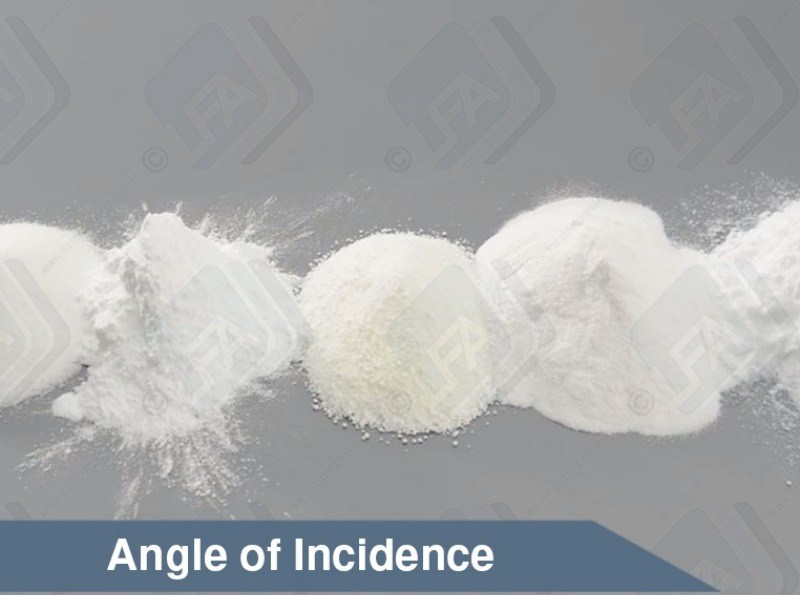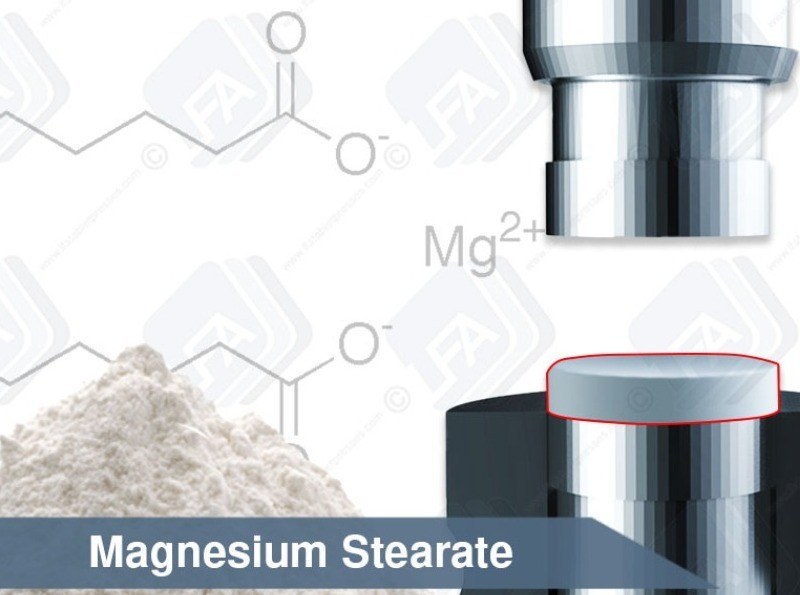硬脂酸镁是细小的白色粉末。它的主要作用是为胶囊和片剂提供润滑效果。它提升流动性,提升生产效率。
硬脂酸镁是压片行业内最广泛使用的助流剂。它之所以这么受欢迎,是因为它是一种非常有效的干粉润滑剂。硬脂酸镁是一种惰性物质,让配置配方的过程更加轻松。
硬脂酸镁是一种含有硬脂酸的镁盐。硬脂酸是碳18饱和脂肪,食品中常见的一种物质。硬脂酸是动物及植物里面的天然物质,是一种常见的脂肪酸,在鱼类、谷类、蛋类、黄油、禽类、肉类和乳类产品种常见的物质。在肉类里,硬脂酸占饱和脂肪酸的三分之一。消费者对它比较熟悉。这也说明了它是一种安全的成分。人体对它并不陌生。硬脂酸镁为你的产品增添更多安全性。
为什么使用润滑剂?
压片过程中,润滑剂非常重要。所以硬脂酸镁在压片时广泛应用。润滑剂的目的是提高某些加工效果。润滑剂有三大功能。
硬脂酸镁是非常优秀的润滑剂,在片剂表面形成坚固层。另一个优势是,它不会因工艺变量的改变而改变。工艺变量指的是通过某种方式改变加工过程中的参数。基本上值得是压片过程中的流动速度、压力和温度等。如果这些因素发生变化,硬脂酸镁也不会发生改变,不影响最终的生产效果。
镁对人体健康是一种重要的矿物质。作为一种必须矿物质,虽然镁分布广泛,但人类饮食中经常缺乏这种元素。镁有助于保持血糖和血压处于正常水平。它帮助形成DNA和蛋白质,保持肌肉和神经功能正常。为保证健康,女性每天需要摄入320毫克镁,男性需要每天摄入420毫克。
硬脂酸镁
硬脂酸镁的处理
硬脂酸可通过氢化作用获得。这种处理的结果就是硬脂酸镁在使用过程中要注意。
硬脂酸镁不能与空气混合,否则暴露于灰尘中。无论如何,硬脂酸镁都要远离火源。如果它是干燥的,可能在倾倒或打旋的过程中产生静电。如果不慎吸入,可能导致咳嗽,如果不慎摄入,可能导致呕吐。在接触硬脂酸镁时,应佩戴手套、安全目镜和口罩。
硬脂酸镁的化学分子式是Mg(C18H35O2)。硬脂酸镁还被称为十八烷酸和镁盐。
它是干性润滑剂的第一选择。另外,镁作为一种矿物质,人体对其无不良反应,可以日常食用。如果您要生产自己的产品,硬脂酸镁可能是完美的赋形剂。
| 项目 | 数值 |
|---|---|
| CAS登录号 | 557-04-0 |
| 分子式 | Mg(C18H35O2)2 |
| 外观 | 淡白色粉末 |
| 物理形态 | 固体 |
| 储存条件 | 室温储存 |
| 熔点 | 200°C |
| 密度 | 1.026 g/c |
| 分子量 | 591.27 g/mol |
| 文件 | 不耐受数据 技术参数 |
Yes, it does not matter what age, size or sex the person consuming the products is. It is, however, important to check the intolerance data.
Yes, all of the excipients are safe for human or animal consumption. There are some precautions that should be taken when handling them and there are some people that might have intolerances to some of them. Information on this can be found in the products MSDS and Intolerance Data Sheet. This can be found in this section for every excipient.
Yes, all of our Excipients are extracted from natural sources. For more information please visit the individual product pages.
Yes, we have bulk pricing for all of our excipients, and these can be found in this section. We offer bulk in 500 kg, 1 ton, 2 ton and 5 ton lots. The prices are set on these quantities as these are the amounts that will fit on pallets.
Yes. CoA stands for Certificate of Analysis this is also known some times as an MSDS (Material Safety Data Sheet) all of the information contained in a CoA is inside the MSDS for every LFA product which is emailed to you after purchase.
It is unlikely that you will be able to produce tablets without using any Excipients at all. Certain products do bind without Excipients, but then do not flow through the machine. We advise that you use our Firmapress ready mix as this works with 99% of products.
Yes. There are two things at play here. You can get hygroscopic and hydrophobic excipients. Hygroscopic means that they take on water quickly, while hydrophobic means that they repel water.
There are products know as supper disintegrants. These products help the breakdown of tablets. At the moment LFA does not sell any supper disintegrants.
Magnesium stearate is hydrophobic this means that it will slow the breakdown of a tablet.
However, it is used in such small amounts that most of the time it will not make a difference to our customer's products. If they would like to be sure then they should conduct what is known as a disintegration test.
Firmapress - 2 years form batch date.
Dextrose - 3 years from batch date.
Dicalcium Phosphate - 3 years from batch date.
Microcrystalline Cellulose -
Magnesium stearate -
Lactose - 2 years from batch date.
Silica Dioxide - 2 years from batch date.
here are 6 steps that should be followed as a general rule of thumb when cleaning contact surfaces that have come into contact with powders:
Dry Clean - First you need to remove as much of the dry powder as possible. You can do this using a hover/vacuum. Make sure that the vacuum you are using has a filter good enough to handle fine dust.
Wet Clean - Next you need to perform a wet clean. This can be done with warm water and soap or if available an ultrasonic cleaner.
Rinse - Next you need to rinse off any soap with potable water (drinking water). You do not have to do this if you used an ultrasonic cleaner in the last step. It is important to ensure that all parts are thoroughly dried immediately after washing to avoid any rusting.
Sanitise - Next you need to sanitise the surface. This step is recommended by the FDA. There are a number of sanitising solutions available designed to be applied and left on.
Lubricate - You now need to lubricate any parts that require it. This should be with the appropriate grade oil or grease considering your use and greasing chart. Store - Finally store any of the parts in a cool dry place. If you are storing them on the machine then make sure the machine is in a temperature controlled environment with low humidity.
We offer Microcrystalline Cellulose, Magnesium Stearate, Dicalcium Phosphate and Firmapress in our range of excipients.
Microcrystalline Cellulose is a binding agent, which holds the content of the tablet together.
Dicalcium Phosphate is a flowing agent and helps move ingredients through the machine before they are compressed.
Magnesium Stearate is a dry lubricant and helps again with the movement of ingredients through the machine but also helps with the ejection of the tablets from the machine. Please note that Magnesium Sterate does not bind by itself.
Firmapress is an all in one mix of Microcrystalline Cellulose, Magnesium Stearate and Dicalcium Phosphate.
Dextrose - approx 100 mesh
Dicalcium Phosphate - approx 100 mesh
Microcrystoline Cellulose - approx 120-200
Magnesium sterate -
Lactose - 80 mesh
Silica Dioxide -
Firmapress - 100-200 mesh
Dextrose - Sweetener, binding agent, good for chewable tablets or candy.
Microcrystalline Cellulose - Binder, filling agent. Good at binding tablets and making them bigger. It can also be used as a filler for capsules.
Magnesium stearate - Dry Lubricant. This stops products from getting stuck to the tooling. It can also help with powder flow issues and caking issues.
Lactose - Binder, sweetener and bulking agent. It has a large mesh so it flows well but most people do not like it because of the intolerance issues.
Silica Dioxide - Flowing agent. This assist powders in flowing smoothly through the machines. It also helps with cacking issues where powders get stuck to the machine.
Firmapress - 2 years form batch date.
Dextrose - 3 years from batch date.
Dicalcium Phosphate - 3 years from batch date.
Microcrystalline Cellulose -
Magnesium stearate -
Lactose - 2 years from batch date.
Silica Dioxide - 2 years from batch date.
If your product does not bind well then we would recommend using MCC. This can be used in any % the limiting factor is the size of the tablet.
If the amount of MCC you would have to use would be too much or if you do not want to use MCC then you have 3 other options: Ask your supplier for a directly compressible or tabletable grade of your product. Spray dry your product. Wet granulate your product.
If your product is sticky then you will need to add a dry lubricant to your mix. For this, we recommend magnesium stearate.
We do not recommend that you add more than 1% to the mix as more than this can cause capping. If your product is still sticky at this point then we would recommend looking into granulation.
If your product or API is clumpy then you will need to add an anticaking agent. For this, we recommend silicon dioxide. We only recommend adding a maximum of 2% of this to the mix







